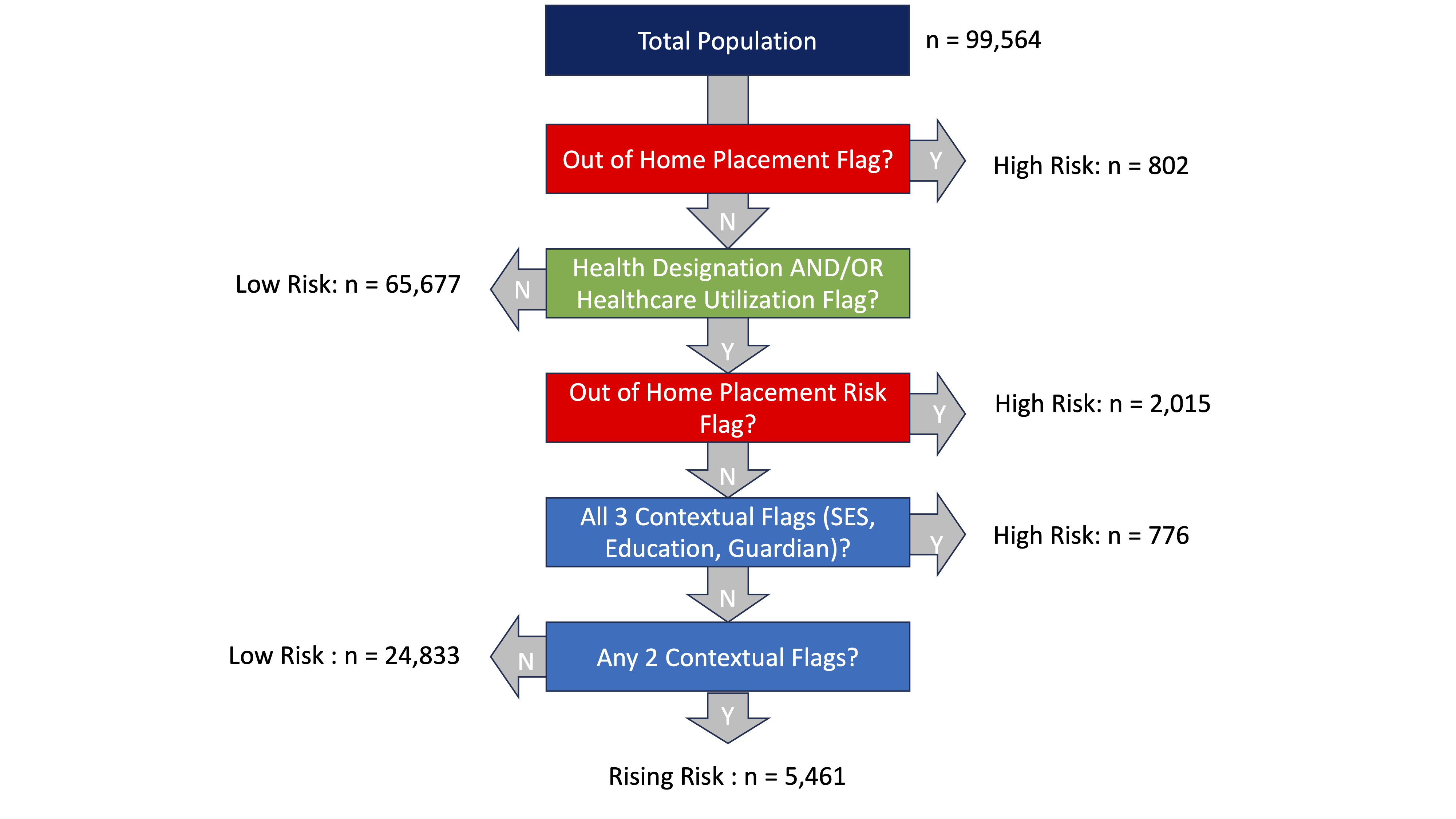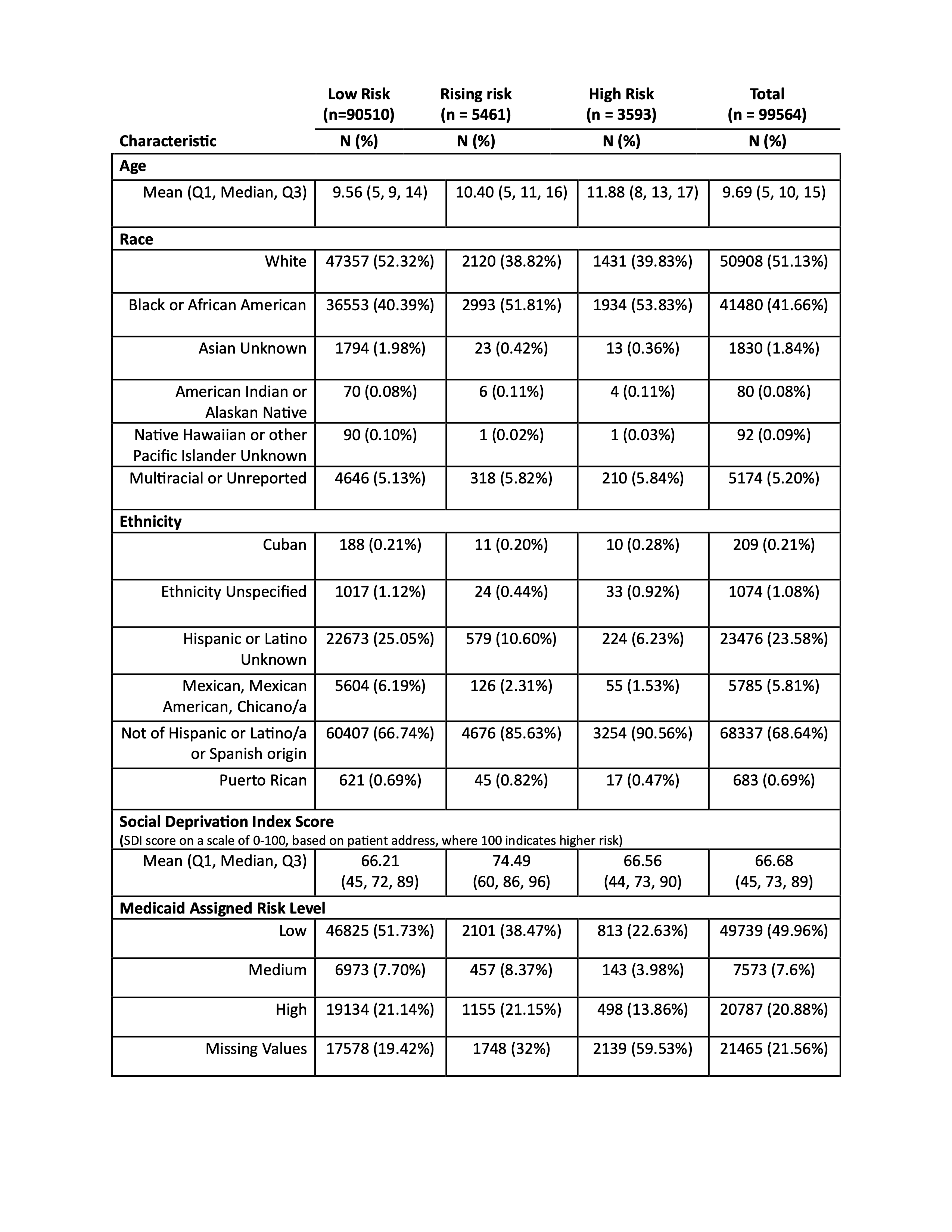Health Services Research
Session: Health Services Research 3: Access
238 - An Innovative Approach to Pediatric Risk Stratification in the North Carolina Integrated Care for Kids Model
Sunday, May 5, 2024
3:30 PM - 6:00 PM ET
Poster Number: 238
Publication Number: 238.2238
Publication Number: 238.2238

Michael J. Steiner, MD, MPH (he/him/his)
Professor of Pediatrics
University of North Carolina
Chapel Hill, North Carolina, United States
Presenting Author(s)
Background: The Center for Medicare and Medicaid Innovation’s Integrated Care for Kids (InCK) models are pediatric service delivery models designed to improve child health. Risk stratification approaches aim to identify patients at high risk of poor outcomes. Standard adult approaches rely on healthcare utilization data; early identification of children at risk of poor outcomes requires inclusion of social and contextual factors. North Carolina (NC) InCK developed an innovative risk stratification approach that integrates health, child welfare, guardian, social, and education data to identify children eligible for care management.
Objective: To describe the NC InCK risk stratification approach and compare its output to a traditional healthcare-focused approach.
Design/Methods: All children with NC Medicaid, aged 0-20 years, and residing in one of five NC InCK counties in October 2022 were included. The NC InCK risk stratification algorithm includes 31 binary variables within 7 categories or “flags” (Table 1). If a child has at least one “yes” variable in a flag, the whole flag is positive. Children are assigned a risk level (low, rising, or high) based on flags (Figure 1). Children with out-of-home placements (e.g. foster care) are automatically designated high risk; all other children must have ≥ 1 health risk in addition to contextual flags to be eligible for rising or high risk levels.
Results: Of 99564 children, 90510 (90.9%) were designated as low risk, 5461 (5.5%) as rising risk, and 3593 (3.6%) as high risk (Table 2). Among 3593 high risk children, 802 qualified through out-of-home placement, 2015 through risk for out-of-home placement, and 776 through concurrent SES, guardian, and education flags. Among 5461 rising risk children, 3741 qualified for rising risk through concurrent socioeconomic status (SES) and guardian flags, 1350 through SES and education flags, and 370 through education and guardian flags. About 40% of rising risk and 20% of high risk children in NC InCK were categorized as low risk by NC Medicaid plans’ existing risk stratification methods.
Conclusion(s): NC InCK’s unique risk stratification approach identifies rising risk and high risk groups based largely on SES, guardian, and out-of-home placement factors. These groups are distinct from those identified by NC Medicaid’s current stratification approach. Using contextual data for risk stratification facilitates the identification of children who may benefit most from care management services; it is not yet clear how risk levels will predict engagement and outcomes.
.png)


